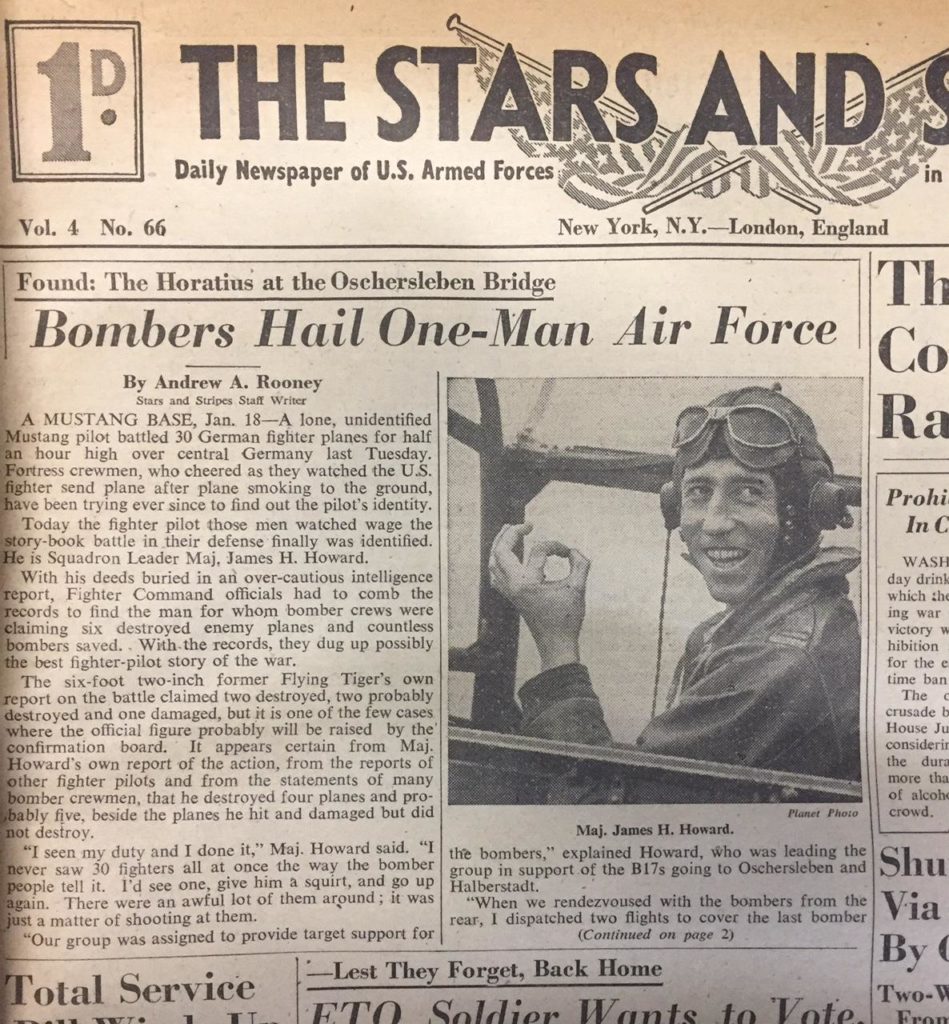In the January 19, 1944 issue of the American Military newspaper, The Stars and Stripes, is what should be considered one of the reporter’s Andy Rooney’s very best Stripes articles. He wrote of a U. S. fighter pilot who makes Western movie heroes seem possible in their adventures against terrible odds.
The airman, Major James H. Howard, son of missionaries to China, was born in China and his early education taken place there. Upon the family returning to the U. S. and James finishing his education, he decided to begin flying. Joining the Navy, he completed their training and began flying off famous named carriers such as the Lexington, the Wasp, and the Enterprise.
His concern of Japan’s invasion into China led him to join a group of Airman to resist the Japanese. They became known as the Flying Tigers, and took a heavy toll on the invading Japanese. Having shot down six Japanese planes, he earned the title of Ace.
After the United States entered the War on December 7, 1941, the Flying Tigers continued to resist the Japanese until July 4, 1942 when it was disbanded. James Howard then joined the U. S. Army Air Corp commissioned as a Captain with the rank of Major and commander of the 354 Fighters Group.
The fighter pilots of this group flew the new P-51 Mustang planes known for their speed, maneuverability, and range. This is where Mr. Rooney’s story begins with Major Howard’s flying feat which is presented at the Stars and Stripes Museum/Library. Major Howard was the only American Fighter Pilot in the European Theater awarded the Medal of Honor.

